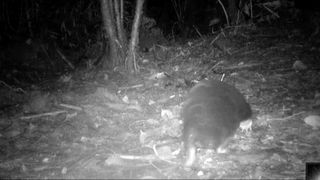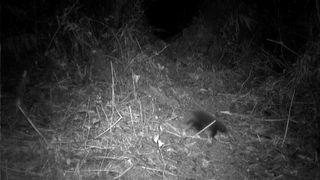The Attenborough long-beaked echidna was thought to have been extinct, as no one has seen one alive for over 60 years. A trail camera solved that!
Deep in the Cyclops Mountains, Indonesia, a team of scientists were on a biological expedition throughout the mountain range when on the last day of the four-week expedition they found the remarkable footage of a creature not seen in over 60 years – Attenborough’s long-beaked echidna.

Named after the British naturalist, presenter, and all-round national treasure David Attenborough, this particular species of echidna was last photographed in 1961. It has only ever been seen in the Cyclops Mountains and was assumed to have been 'lost' due to being shy, nocturnal burrow-dwellers who are notoriously difficult to find.
Dr James Kempton, expedition lead and biologist from the University of Oxford says, “Attenborough's long-beaked echidna has the spines of a hedgehog, the snout of an anteater, and the feet of a mole. Because of its hybrid appearance, it shares its name with a creature of Greek mythology that is half human, half serpent. It appears so unlike other mammals because it is a member of the monotremes – an egg-laying group that separated from the rest of the mammal tree-of-life about 200 million years ago.”
Kempton was also the scientist who found the footage of the animal, on the very last memory card checked from 80 cameras, and on the last day of the expedition. This was a great payoff to what sounded like an otherwise treacherous expedition, with the team enduring an earthquake, malaria, and even a leech on an eyeball!
Trail cameras are a fantastic way to get a glimpse into the activity of the natural world, without interfering with it, and they can often produce surprising results, much like this case; as shown by this video produced by The Telegraph. It is not stated which particular trail cameras were used by the expedition team (perhaps it was one of the best trail cameras for wildlife), but it was able to produce exceptionally clear footage of the creature. See more information about the expedition and the official footage on the Expedition Cyclops webpage.
If trail cameras sound like something you wish to find out more about, we offer a guide on the best trail cameras that can give you more information as well as some examples of the capabilities.






